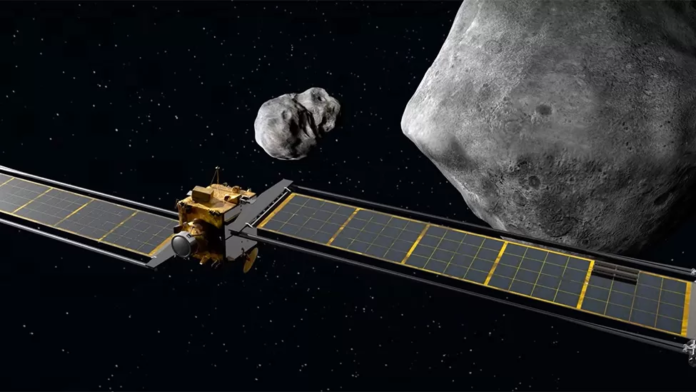The American space agency’s Dart probe has smashed into an asteroid, destroying itself in the process.
The collision was intentional and designed to test whether space rocks that might threaten Earth could be nudged safely out of the way.
Dart’s camera returned an image per second, right up to the moment of impact with the target – a 160m-wide object called Dimorphos.
What had been a steady image stream cut out as the probe was obliterated.

Controllers, based at the Johns Hopkins University Applied Physics Laboratory (JHU-APL), erupted with joy as Dimorphos filled the field of view on Dart’s camera just before then going blank. Initial calculations suggest the impact was a mere 17m off the exact centre of Dimorphos.
It will be some weeks before scientists on the Nasa-led mission know for sure whether their experiment has worked, but Dr Lori Glaze, the director of planetary science at the space agency, was convinced something remarkable had been achieved.
“We’re embarking on a new era of humankind, an era in which we potentially have the capability to protect ourselves from something like a dangerous hazardous asteroid impact. What an amazing thing; we’ve never had that capability before,” she told reporters.
And Dr Elena Adams, a JHU-APL mission systems engineer, said “earthlings should sleep better” knowing they had a planetary defence solution.

Researchers will determine success, or otherwise, by studying the changes to the orbit of Dimorphos around another asteroid known as Didymos.
Telescopes on Earth will make precise measurements of the two-rock, or binary, system.
Before the collision, Dimorphos took roughly 11 hours and 55 minutes to circle its 780m-wide partner.
This ought to reduce by a few minutes following the crash.

